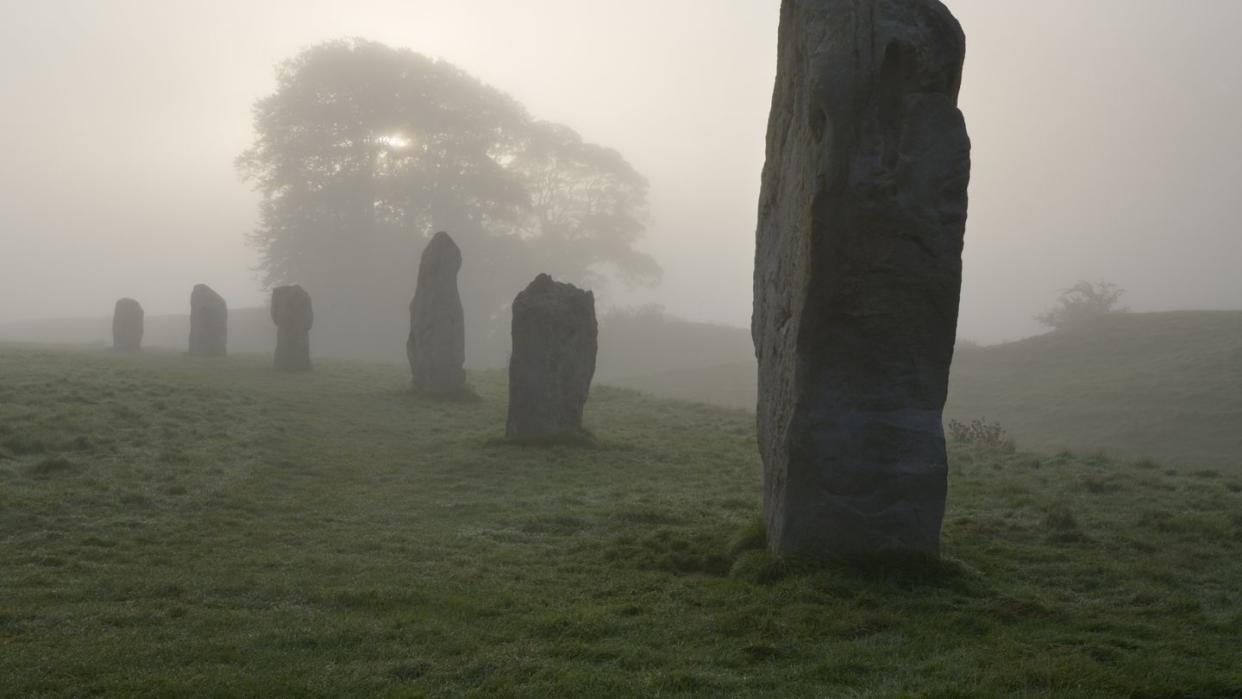Archaeologists Searched For a Cult’s Secrets—and Stumbled Upon an Ancient Henge Instead

- Oops!Something went wrong.Please try again later.
"Hearst Magazines and Yahoo may earn commission or revenue on some items through these links."
While searching for clues about a cult linked with a nobleman-turned-hermit, archaeologists discovered the remains of one of the largest henge sites ever found in eastern England.
The circular earthwork used for ritual practices was likely a Late Neolithic or early Bronze Age site.
The location was deserted for multiple centuries before being taken up again as a sacred place.
The search to better understand a cult from over 1,300 years ago led to an even older find: one of the largest henge sites ever seen in eastern England, dating back to the Neolithic period.
The legend surrounding the ruins of a medieval abbey near Crowland, England, links the henge with an Anglo-Saxon hermitage honoring Saint Guthlac. But it turns out that the site’s history runs much deeper.
After Guthlac gave up his life as the son of a nobleman to live in solitude, he became a popular figure. Shortly after his death in 714 AD, a small monastic community formed in his memory. The success of this cult helped establish the Crowland Abbey in the 10th century, but little else is known about Guthlac and the location on which his hermitage once rested.
In searching for the site, archaeologists found something arguably even more exciting. A study published in the Journal of Field Archaeology chronicles a location known as Anchor Church Field and its ties to ancient history.
Archaeologists long suspected that Anchor Church Field was the site of Guthlac’s hermitage. But when a team from Newcastle University and the University of Sheffield joined forces to excavate the location, they discovered an unknown Neolithic or Early Bronze Age henge—defined by English Heritage as a prehistoric circular or oval earthen enclosure with a ring-shaped bank on the outside and a ring-shaped ditch on the inside, likely used for ceremonial purposes. It turns out the circular earthwork is one of the largest ever found in eastern England, and carbon dating on a timber portion of the henge places its construction at about 1400 BC.
The site was created as a monumental henge that was “probably later adapted into a timber circle,” the authors wrote. But the location went into disuse, potentially for centuries, until it was reoccupied around the 7th century AD. After further early Medieval phases, the abbots of Crowland transformed it with the construction of a high-status hall and chapel complex in the later 12th century.
In a statement, the research team said that due to the henge’s elevated location, it likely held prominence as a site for ceremonial activity. Even after centuries of desertion, the remnants of the henge may have still been visible in the medieval period. The team surmises that a hermit like Guthlac could have viewed it as a unique landscape with a sacred past.
While the team can’t directly link Guthlac to the site, they believe the henge was reoccupied—based on pottery, glass, and bone fragments from the site—around the same time as Guthlac would have been in the area.
“We know that many prehistoric monuments were reused by the Anglo-Saxons, but to find a henge—especially one that was previously unknown—occupied in this way is really quite rare,” Duncan Wright, Newcastle University medieval archaeology lecturer, said in a statement. “Although the Anglo-Saxon objects we found cannot be linked with Guthlac with any certainty, the use of the site around this time and later in the medieval period adds weight to the idea that Crowland was a sacred space at different times over millennia.”
The team also discovered the remains of a 12th-century hall and chapel, possibly used to house high-status pilgrims visiting Crowland. Historic records show that the buildings were in ruins by the 15th century, as pilgrimage to the site dropped in popularity.
When the draining of marshland remade the topography around Crowland, the Anchor Church Field—once an elevated location on a peninsula—became ideal farmland, erasing much of the history of the location.
“Anchor Church Field offers an exceptional case study of an evolving sacred landscape in a deep-time perspective,” the study authors wrote, “culminating in its redevelopment by the Anglo-Norman monastery to claim legitimacy from illustrious saintly forebears.”
You Might Also Like

